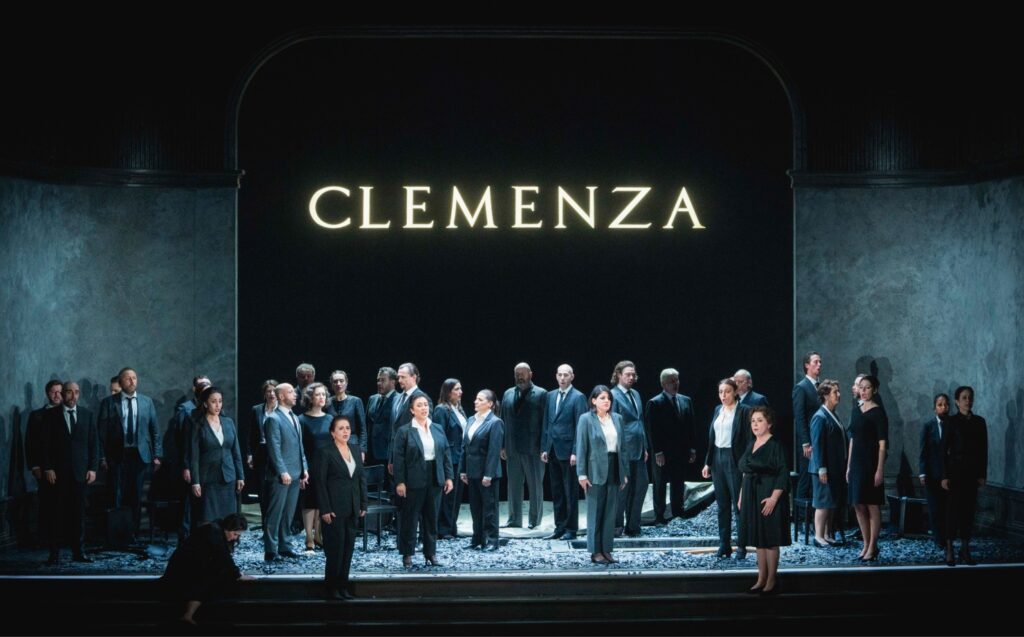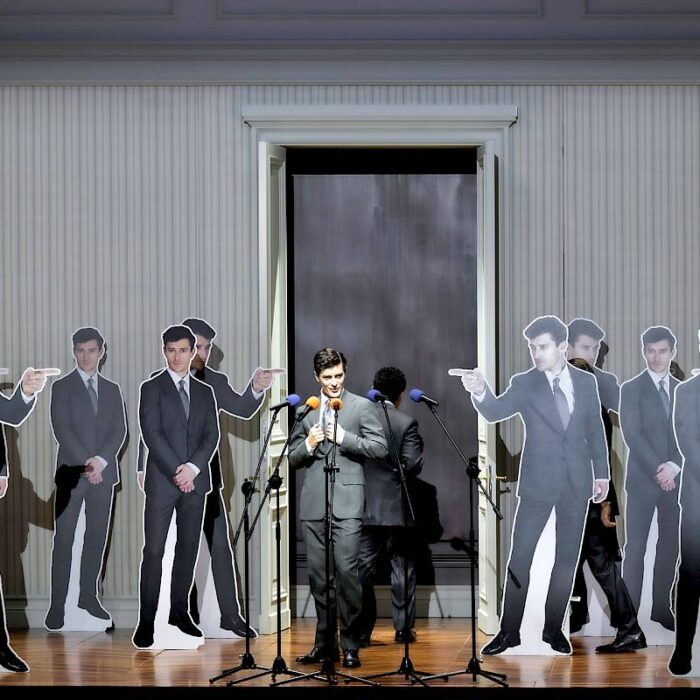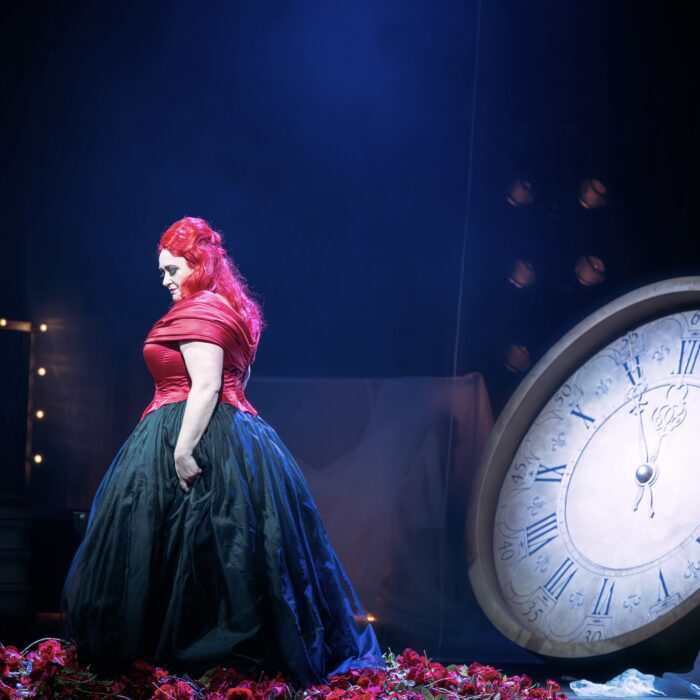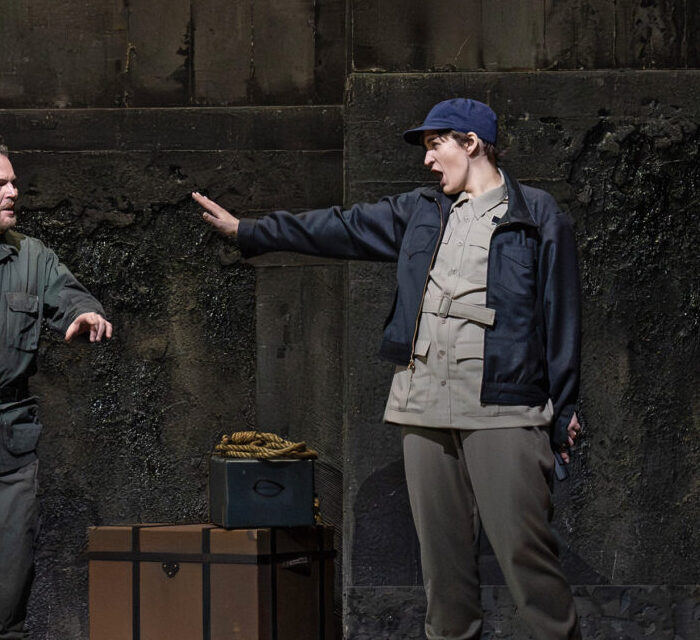
Opéra de Monte-Carlo 2024 Review: Mozart in Monaco Festival
Captivating Performances of Mozart’s ‘Don Giovanni’ & ‘La Clemenza di Tito’
By Robert Adelson & Jacqueline Letzter(Photos: Marco Borrelli)
The Opéra de Monte-Carlo ushered in the new year with two standout productions as part of the “Mozart in Monaco” festival, organized by the resident Orchestre Philharmonique de Monte-Carlo.
The festival’s first offering was a semi-staged “Don Giovanni,” presented by the Wiener Staatsoper on January 19th. Cecilia Bartoli, director of the Opéra de Monte-Carlo, continued her fruitful collaboration with the Viennese institution.
Following the success of 2023’s “Le Nozze di Figaro” in Monaco’s Salle Garnier, Bartoli moved this year’s “Don Giovanni” to the larger Auditorium Rainier III to accommodate the increased demand.
“Don Giovanni:” Minimalistic & Engaging
The musicians of the Staatsoper orchestra occupied most of the stage, often rivaling the singers for the audience’s attention. The production, based on Barrie Kosky’s Vienna staging and adapted by Lisa Padouvas and Katrin Lea Tag, embraced minimalism: a row of black rocks of varying sizes served as the sole scenic elements. These props, symbolizing objects like weapons or food and abstract ideas such as guilt or grief, encouraged viewers to engage their imaginations rather than relying on elaborate visual effects, which provided a welcome contrast to many modern productions that rely heavily on digital projections.
The singers moved freely around the orchestra, occasionally interacting with the musicians. Leporello’s distribution of fake money to the contrabass players was a particularly memorable moment. However, when the ensemble numbers were sung in front of the stage, there were occasional synchronization issues between singers and orchestra, prompting conductor Bertrand de Billy to intervene directly by waving his baton in front of a singer’s face to regain control over the situation.
The cast delivered uniformly admirable performances. Davide Luciano’s Don Giovanni leaned into comic vulgarity, departing from the devilish interpretations of Ruggero Raimondi or the suave elegance of Thomas Hampson. Peter Kellner’s Leporello, athletic and charming, reaffirmed his standing as a premier buffa baritone. Maria Bengtsson brought dramatic intensity to Donna Anna, her high register blooming more fully in Act two. Edgardo Rocha made his role debut as Don Ottavio, starting hesitantly in “Dalla sua pace” but finding confidence in “Il mio tesoro.”
Tara Erraught was cast as a laughably pitiful Donna Elvira, dressed in a somewhat absurd heart-adorned gown. However, she delivered a vocally strong performance, particularly in the Act one quartet and “In quali eccesi.” Andrea Carroll’s Zerlina was both vocally and theatrically convincing, while Andrei Maksimov added complexity to Masetto’s characterization. Antonio Di Matteo’s Commendatore, the production’s most serious portrayal, sang with a rich timbre and dramatic conviction.
This delightful rendition leaves audiences hoping for the Wiener Staatsoper to return to Monte-Carlo with “Così fan tutte” to complete the Da Ponte trilogy.

“La Clemenza di Tito:” Austere Visuals & Radiant Vocals
The second opera, Mozart’s “La Clemenza di Tito,” was the final installment of a coproduction with the Royal Danish Opera and Staatsoper Hamburg. Directed by Jetske Mijnssen, the staging featured a stark black-and-grey aesthetic with characters in modern attire. Each scene was framed by a single word engraved on the proscenium: “Delizia,” followed by “Potenza” and “Tradimento,” culminating in “Clemenza.” While these inscriptions offered a thematic roadmap, the sudden revelation of the word “Clemenza” in the middle of Vitellia’s aria “Non più di fiori” felt mistimed, because the theme of mercy is entirely absent from this aria.
Despite battling the flu for the January 26th performance, tenor Giovanni Sala delivered a commendable performance as Tito, his only struggle being the demanding coloratura in “Se all’impero.” The success of any production of “La Clemenza di Tito” depends on the proper casting of the pivotal roles of Vitellia and Sesto. Mané Galoyan excelled in Vitellia’s wide-ranging tessitura, showcasing agile coloratura in “Deh, se piacer mi vuoi” and a resonant lower register in “Non più di Fiori,” though her acting lacked the intensity needed for this complex character. Cecilia Bartoli’s portrayal of Sesto, by contrast, was a masterclass in dramatic nuance. Her interpretation balanced Sesto’s internal conflict with flashes of fiery anger toward Vitellia, vividly bringing the character to life.
Mélissa Petit’s clear, elegant Servilia paired well with Anna Tetruashvili’s Annio, while bass-baritone Péter Kálmán as Publio saw his Act two aria, “Tardi s’avvede,” unfortunately omitted.
Conductor Gianluca Capuano’s brisk pacing, combined with significant cuts to the recitativo secco, streamlined the opera without sacrificing its emotional depth. Capuano’s flexible tempo choices highlighted the artistry of the period-instrument orchestra Les Musiciens du Prince-Monaco. Particularly impressive were the contributions of Francesco Spendolini on basset clarinet and basset horn, respectively in Sesto’s “Parto, Parto” and Vitellia’s “Non più di Fiori.”
Mijnssen’s staging ended on an ambiguous note: after granting clemency to Sesto and Vitellia, Tito pointed a gun at himself. The curtain fell, leaving the audience to ponder whether he had taken his own life, an interpretation that felt both provocative and unresolved.
The “Mozart in Monaco” festival demonstrated the Opéra de Monte-Carlo’s commitment to reimagining classic works. With its innovative staging and exceptional performances, the festival captivated audiences with Mozart’s timeless ability to inspire and move.



